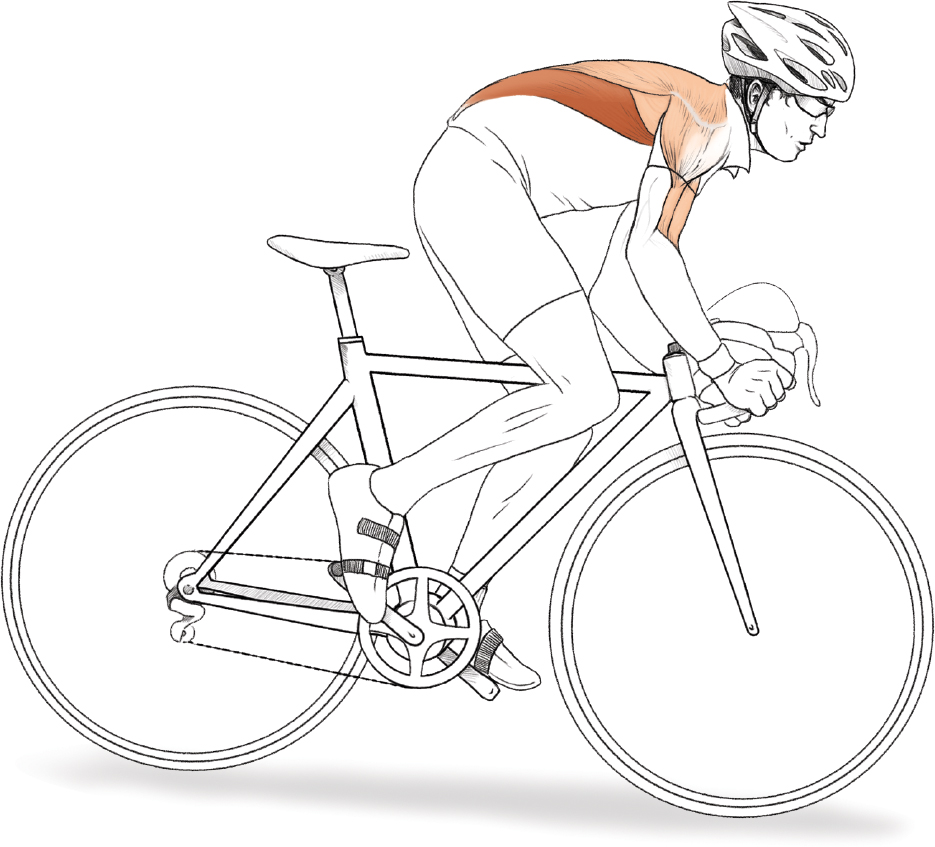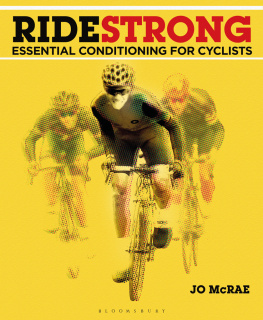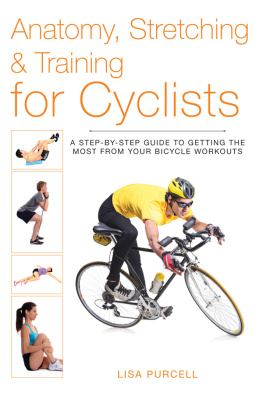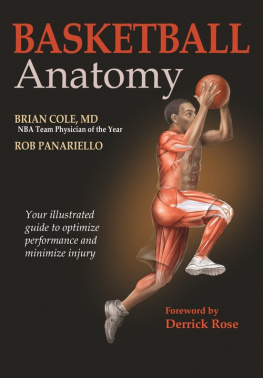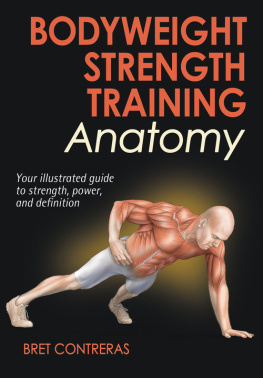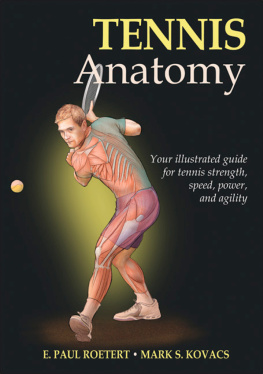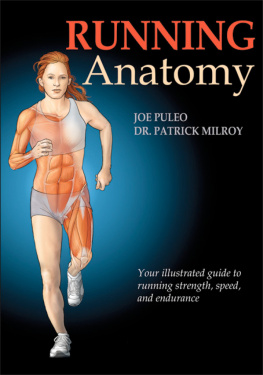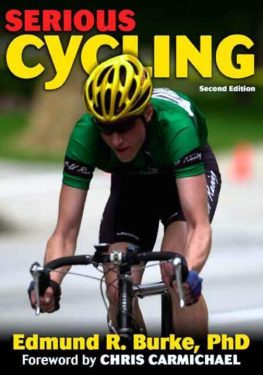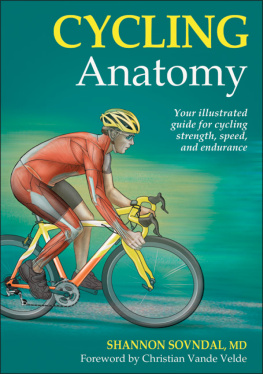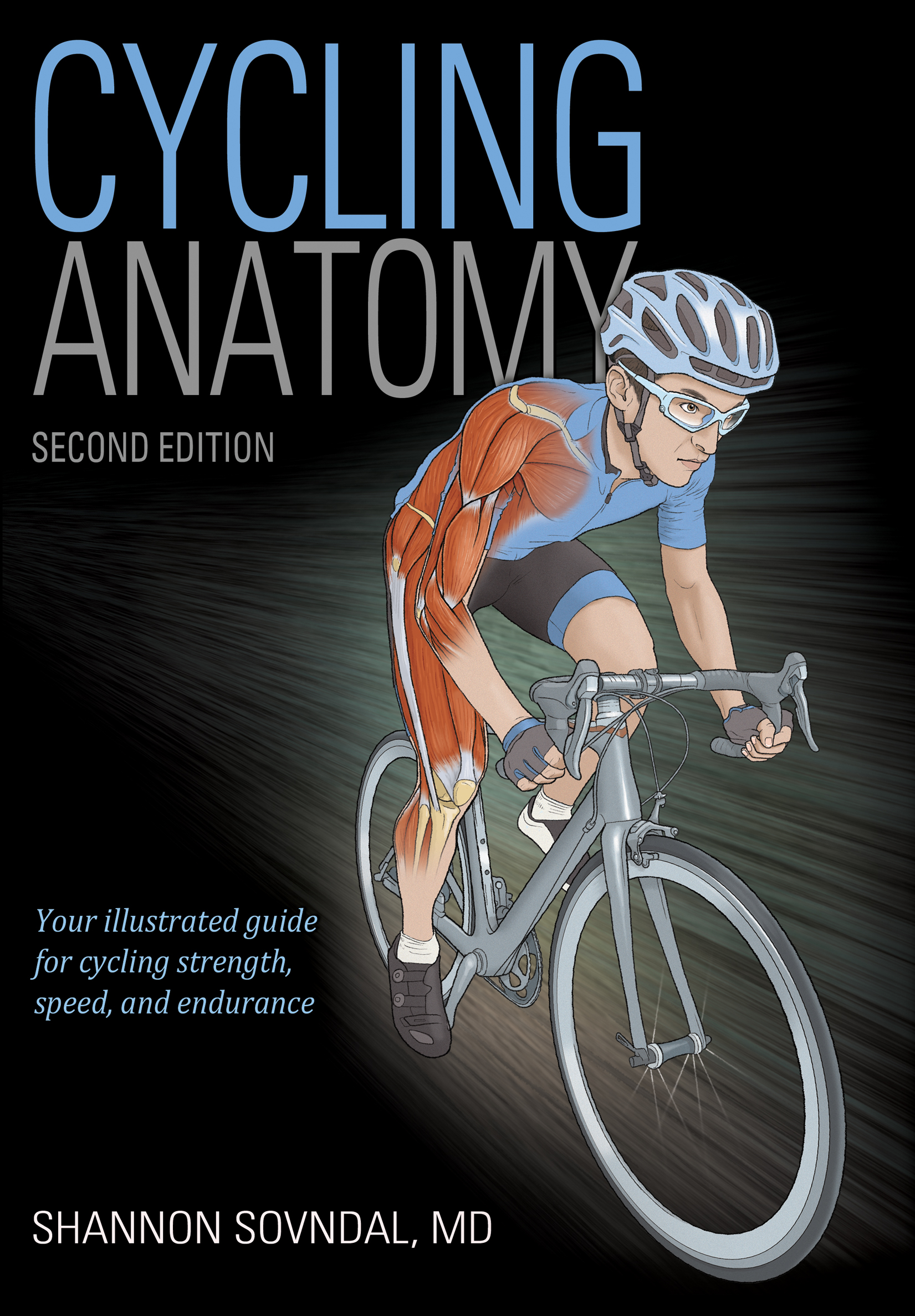Contents
Guide
Pagebreaks of the print version
SECOND EDITION
Cycling
ANATOMY
Shannon Sovndal, MD

Library of Congress Cataloging-in-Publication Data
Names: Sovndal, Shannon, 1970- author.
Title: Cycling anatomy / Shannon Sovndal, MD.
Description: Second edition. | Champaign, IL : Human Kinetics, 2020. | Includes bibliographical references.
Identifiers: LCCN 2018056280 (print) | LCCN 2019016762 (ebook) | ISBN 9781492591436 (epub) | ISBN 9781492568742 (PDF) | ISBN 9781492568735 (print)
Subjects: LCSH: Cycling--Training. | Cycling--Training--Charts, diagrams, etc. | Cycling--Physiological aspects.
Classification: LCC GV1048 (ebook) | LCC GV1048 .S68 2020 (print) | DDC 796.6/2--dc23
LC record available at https://lccn.loc.gov/2018056280
ISBN: 978-1-4925-6873-5 (print)
Copyright 2020 by Shannon Sovndal
Copyright 2009 by Ronin, P.L.L.C.
All rights reserved. Except for use in a review, the reproduction or utilization of this work in any form or by any electronic, mechanical, or other means, now known or hereafter invented, including xerography, photocopying, and recording, and in any information storage and retrieval system, is forbidden without the written permission of the publisher.
This publication is written and published to provide accurate and authoritative information relevant to the subject matter presented. It is published and sold with the understanding that the author and publisher are not engaged in rendering legal, medical, or other professional services by reason of their authorship or publication of this work. If medical or other expert assistance is required, the services of a competent professional person should be sought.
The web addresses cited in this text were current as of October 2018, unless otherwise noted.
Senior Acquisitions Editor: Michelle Maloney; Senior Developmental Editor: Cynthia McEntire; Senior Managing Editor: Amy Stahl; Copyeditor: Pamela S. Johnson; Permissions Manager: Martha Gullo; Graphic Designer: Whitney Milburn; Cover Designer: Keri Evans; Cover Design Associate: Susan Rothermel Allen; Photographer (for cover illustration reference): Dmytro Aksonov/E+/Getty Images; Photo Asset Manager: Laura Fitch; Photo Production Coordinator: Amy M. Rose; Photo Production Manager: Jason Allen; Senior Art Manager: Kelly Hendren; Illustrations (cover and interior): Human Kinetics, unless otherwise noted; Printer: Versa Press
Human Kinetics books are available at special discounts for bulk purchase. Special editions or book excerpts can also be created to specification. For details, contact the Special Sales Manager at Human Kinetics.
Printed in the United States of America10987654321
The paper in this book is certified under a sustainable forestry program.
Human Kinetics
P.O. Box 5076
Champaign, IL 61825-5076
Website: www.HumanKinetics.com
In the United States, email info@hkusa.com or call 800-747-4457.
In Canada, email info@hkcanada.com.
In the United Kingdom/Europe, email hk@hkeurope.com.
For information about Human Kinetics coverage in other areas of the world,
please visit our website: www.HumanKinetics.com
E7342

To my kids:
Soren
Theron
Saveah
Elias
CONTENTS
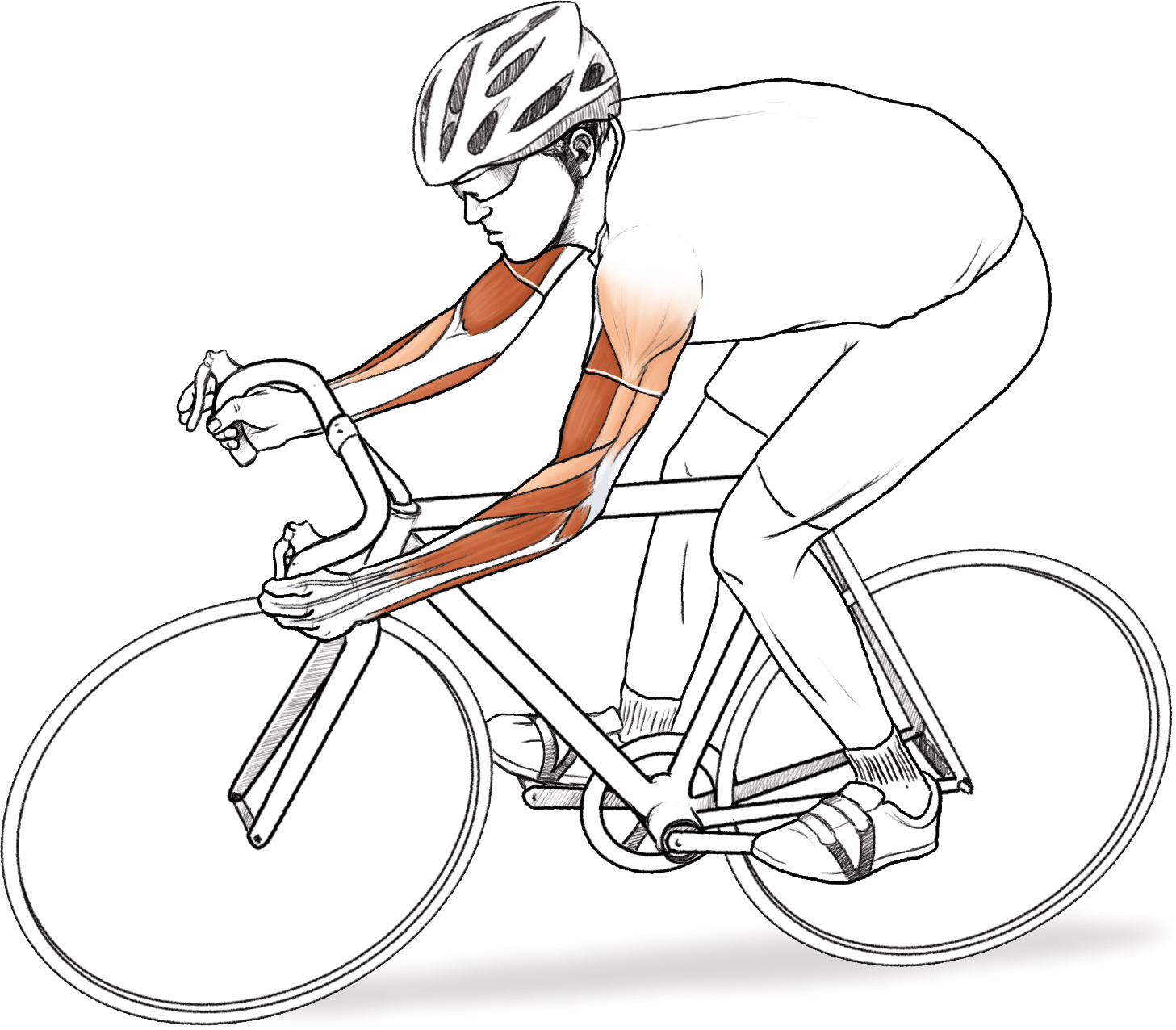
FOREWORD
I first met Dr. Shannon Sovndal at the University of California at Davis. Back then, we were collegiate bike racers, striving to be better. For us, that process wasnt just about brawn; it was also about brain, and we became obsessed about learning as much as possible about the science of human performance. So when I was trying to figure out what I was going to do after undergraduate studies, Shannon came up with this big vision. The idea was that I would go to graduate school to study exercise physiology and that he would go to medical school. We would then reunite in Boulder, Colorado, and work for a professional cycling team at the Tour de France. As grandiose as this plan was, the confidence that Shannon projected about this possibility inspired me to try.
Many years later, I found myself completely pummeled after an extraordinarily long day working at the Tour de France as the director of sport science for the Garmin Professional Cycling Team. Exhausted, I retired to a tiny French hotel room, where I was greeted by my equally tired roommate, the teams doctor. Acknowledging how spent we both were, I commented with ironic pride, Shannon, I guess we made it.
I wouldnt have had an opportunity to train some of the best riders in the world if it werent for Dr. Sovndal. More importantly, theres no one better at putting science into practice than Dr. Sovndal, who has been a role model and loyal friend throughout my career.
Cycling Anatomy is a reflection of that skill and care, showcasing Dr. Sovndals ability to take something as complex as human anatomy and apply it in a way that is simple and practical without a loss of depth or accuracy. Knowledge literally is power, and improving ones physical performance starts with an intelligent and informed approach. Through detailed illustrations and simple exercises that are directly translated into real-world cycling movements, Shannon creates a no-nonsense framework to give any rider, coach, student, or practitioner a pragmatic way to learn and plan.
Although cycling performance is often thought of as an aerobic activity, strength is absolutely foundational. Without this foundation, aerobic capacity is limited, riders become unbalanced, and injuries ensue. Cutting to the chase, to improve power on a bicycle, there are only two things one can do: pedal faster or push harder. The primary difference between elite and non-elite performers is that elite cyclists can push harder. Better cyclists have more strengthnot just in their legs, but in the countless muscles that play a functional or supportive role in cycling biomechanics.
Its this last idea that I know motivated Dr. Sovndal to write Cycling Anatomy. After years of working with chronically injured cyclists, Shannon began getting riders in the gym, helping to turn anatomical weaknesses into strengths. These weaknesses werent just in their legs; they were also in their midsection, arms, neck, and the stabilizing muscles through their back. Going beyond addressing these bottlenecks, Dr. Sovndal gave the athletes he worked with the proper vocabulary and knowledge to identify and remedy them.
Cycling Anatomy reflects real-world lessons that can help anyone looking to improve their mind or their body when cycling. For me, this book is a constant reference as I continue to help riders become the best in the world and as I continue to be a student of the sport. No matter where we find ourselves in life, its never too early or too late to find ways to be better.
Allen Lim, PhD
Founder of Skratch Labs
THE CYCLIST IN MOTION
